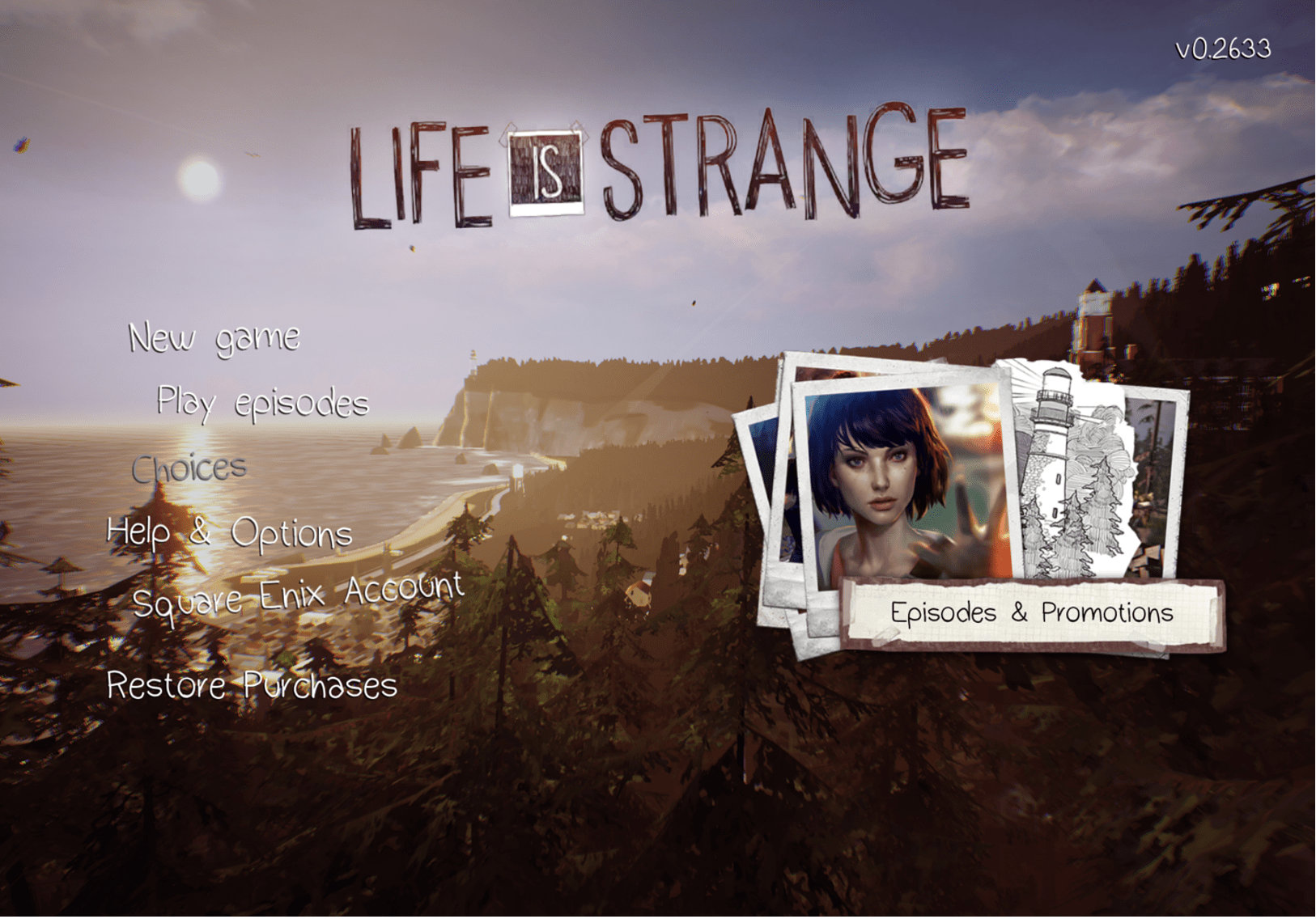For this critical play, I decided to download and install Life is Strange, which is developed by Dontnod Entertainment and published by Square Enix. It’s a graphic adventure game, with stunning graphics and an intended target audience of teens and adults. A prevalent theme throughout this game, the game’s primary mechanisms of fun centers on narrative, discovery, and challenge – the overarching mechanism of the game is single player vs. game. The main objective of the game is to replay and explore the world that Max has altered through his decisions and discover the optimal or “right” way of life through his imaginations. By interacting with surrounding objects, your environment, and by speaking with other NPC’s in the world, the user has the fundamental ability to alter their own narrative in the story. The game is definitely much less hand-holdy and themes of discovery and narrative are strongly encouraged during the early parts of the game – the user is tasked with exploration of the surrounding environment and to discover every nook and cranny of the imagined world. As the game progresses, narrative and plot overtakes as the primary mechanism of the game, where the main protagonist witnesses a murder and must make individual decisions to “rewind the past”. The game gives the user plenty of autonomy and freedom to make their own decisions and fundamentally alter the course of their game, with the use of providing open-ended questions and decision points. This encourages players to especially pay attention to the plot and overall narrative of the story to uncover new findings about the protagonist and their surroundings. Mystery is prevalent throughout the game, and the use of mechanisms like narrative and discovery reinforce the driving mystery of the plot. With the option for players to interact with objects, other people, and new surroundings, players are encouraged to interact with space and see if any environmental objects may contain clues for the mystery at hand. The rewind mechanism is also central to the mystery of the game, as users are constantly interested and motivated to see if there was a secondary or alternative outcome for most events throughout the story. I did find myself constantly reusing the rewind function, which may or may not be a positive outcome of this mechanism! I found that it usually held me back as I was constantly trying to see if an alternative outcome were possible. If I were to change something about this game, I would encourage a higher degree of customizability of the player to make them much more relatable to yourself!

The Mechanics of Magic
Game Design Writings by Students at Stanford taking 247G and 377G


